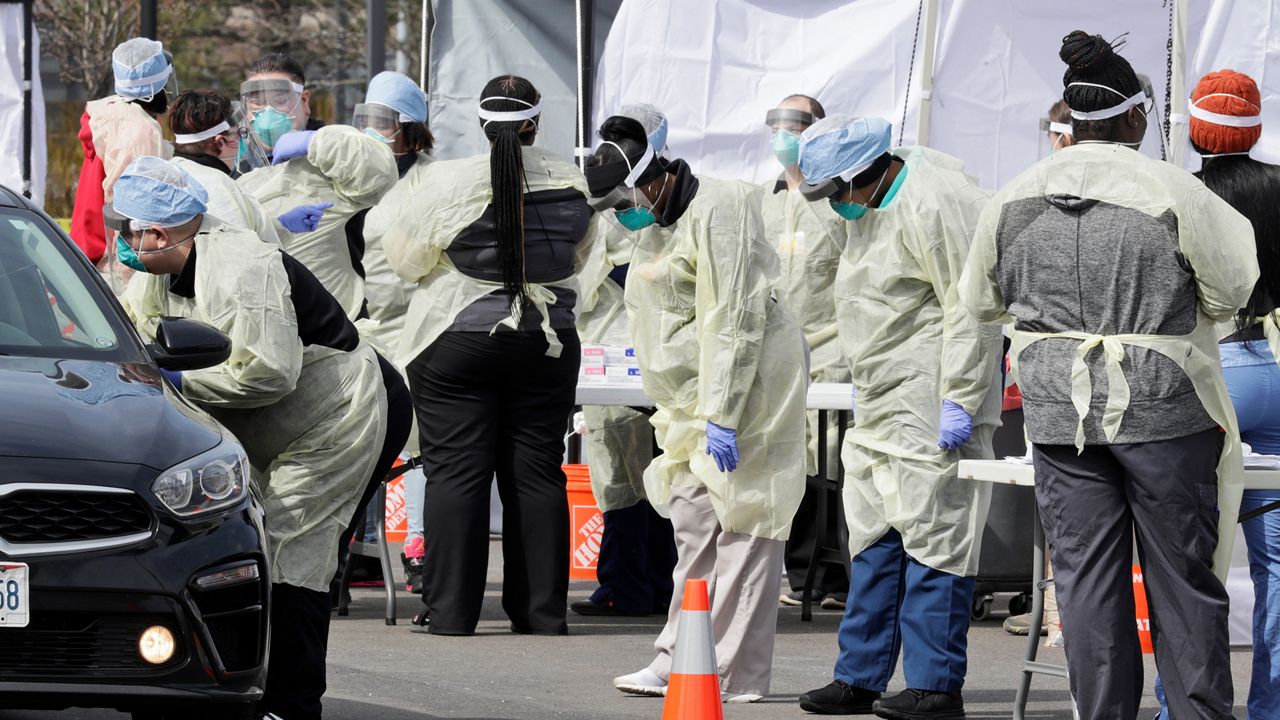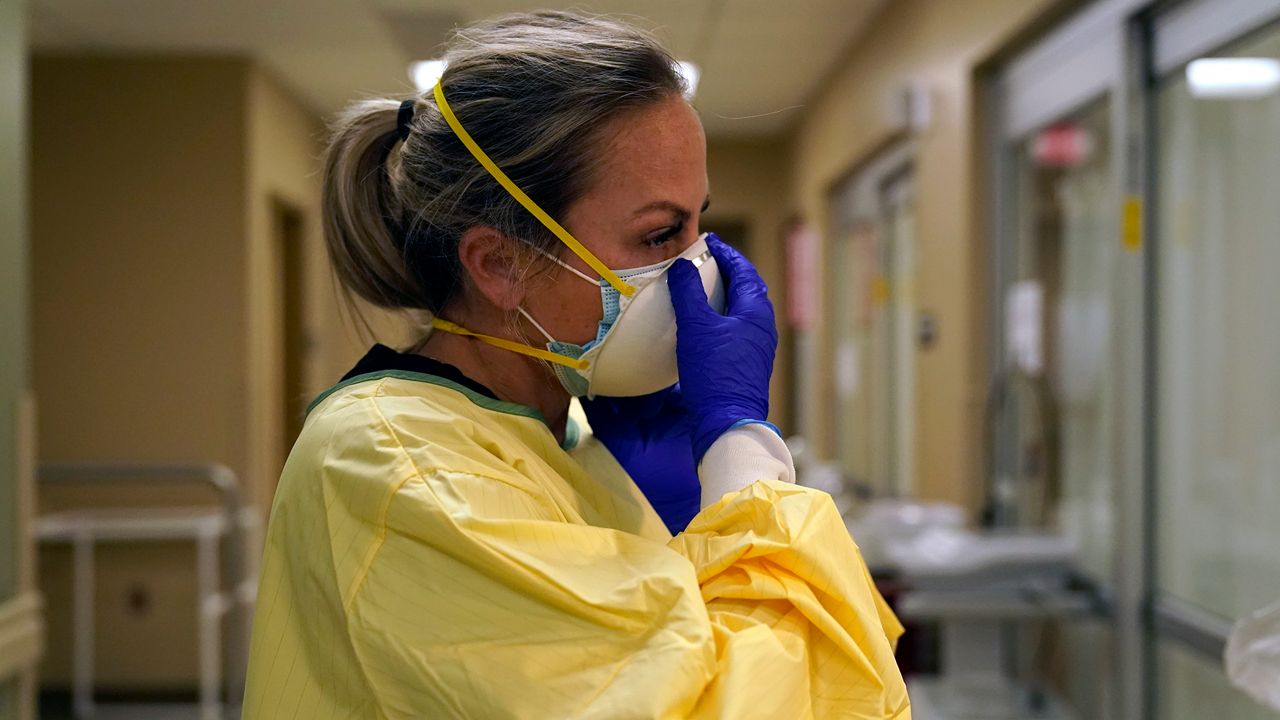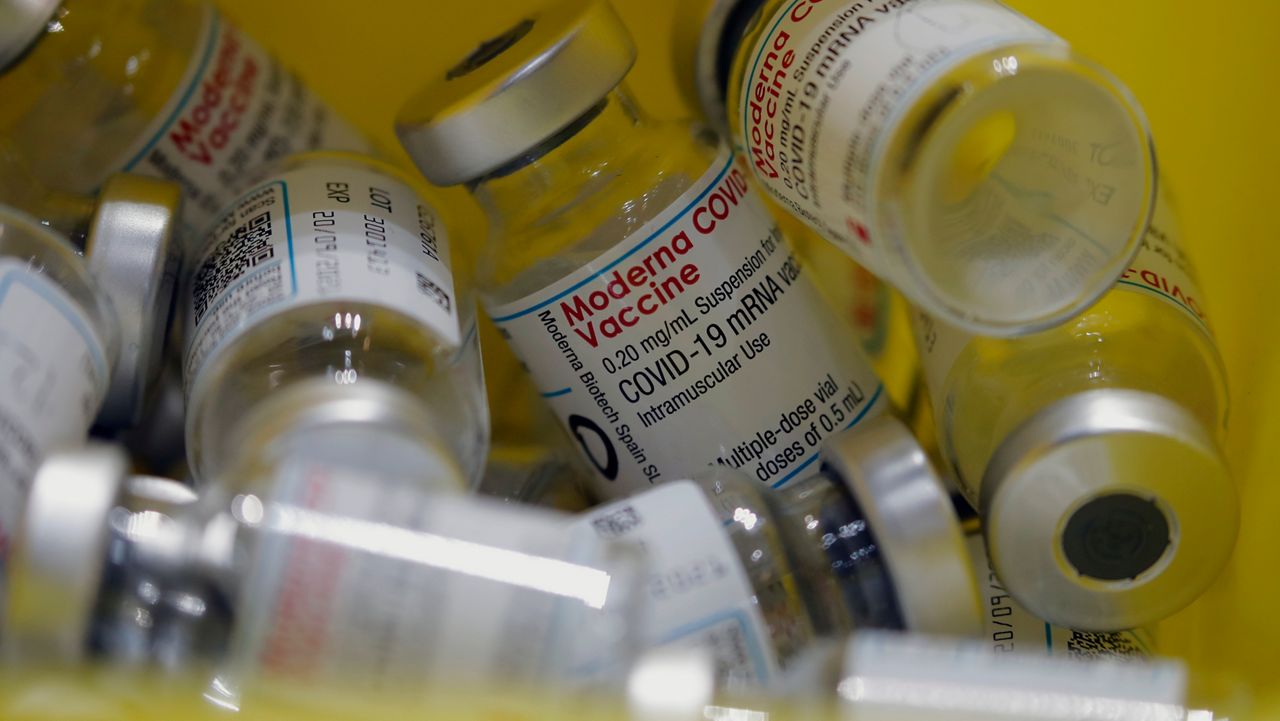COLUMBUS, Ohio — The state became the seventh in the nation to pass one million COVID-19 infections on Monday — a once-unimaginable milestone that marks the scope of the spread in the Buckeye state.
Ohio reported its 1,000th case on March 27, and then, after what felt like a long half-year of social distancing, the state hit the 100,000 milestone on Aug. 9, according to the Ohio Department of Health.
Back then, it was unforeseen that a forceful fall and winter surge would shoot the state’s case count up tenfold, but 13 months into the pandemic, Ohio crossed the million marker and more than 8.5% of the population has tested positive.
Reflecting on the monumental figure Monday morning, Gov. Mike DeWine said the true number of infections is likely far greater. Testing has improved from the days when it could take weeks to get a result, and Ohio has reported more than 10.7 million total tests, but hundreds of thousands of cases were certainly missed due to the asymptomatic nature of the disease.
“This is one more milestone that we did not want to hit, but this is where we are. The good news about this is that there's a lot of us who now have the immunity and don't even know we have it,” he said.
The state reported 1,444 new cases Monday, bringing the total to 1,001,194.
The governor said it is tragic the virus has spread so far in Ohio, but he said it gives the state an advantage in getting toward herd immunity sooner this spring.
The seventh most populous state, Ohio has reported the seventh most cases and ninth most deaths, (18,340). The state is near the middle of the pack in the U.S. for cases per capita (34th) and deaths per capita (25th).
In Ohio, the seven-day case average stood at 1,538 Monday and seven-day average deaths were at 58 as of Sunday.
Touring a vaccination site in Youngstown, Ohio on Monday, DeWine issued another warning that there is a race between the vaccine roll out and the accelerating spread of more contagious variants in Ohio, citing alarming reports from Michigan, where COVID-19 cases are surging again. Michigan has the second most Centers for Disease Control and Prevention-confirmed cases of the variant discovered in the U.K.
“We are seeing in different parts of the country a movement up in the number of cases,” he said. “In Ohio, in the last few days, we are seeing what appears to be a plateauing out. These cases were going down. It would appear that we're now starting to plateau. And, of course, our concern is that we start back up.”
Testing has declined significantly since reaching a fall peak, according to the Ohio Department of Health. Over a seven-day average, the state was administering around 64,000 tests on Nov. 25, 2020.
At that point in time, the state’s seven-day testing positivity was 13%. As of March 19, the seven-day positivity rate sits at 3%.
Average tests have fallen to 31,313, as of March 17, in large part because fewer people are experiencing symptoms.
“The good news is that the positivity rate is hovering around 3%,” DeWine said Monday. “You know we wish it was 2%. We wish to have 1%. We wish it was zero. But at one point in December, we were over 15%, so the positivity numbers are good.”
The highest positivity rate came last March with a 24% average.
Since October, most Ohio counties remained in Red Alert Level 3 on the state’s Public Advisory System.
DeWine released the four-level scale in July to track the spread of COVID-19. Purple Alert Level 4 indicated the most spread, which some counties entered in the fall surge, including Franklin and Hamilton counties.
But as of March 18, five states have fallen back down to Yellow Alert Level 1 — the most yellow the state has seen since September. More than 20 counties went from red to Orange Alert Level 2.
The first three cases were confirmed in the state on March 9, but health officials said they now believe that there were 677 cases at that point with individuals showing symptoms in early January.
Pete Grieve is a Report for America corps member covering public health for Spectrum News in Columbus, Ohio. Report for America is a nonprofit national service program that places journalists in local newsrooms to report on undercovered issues.








